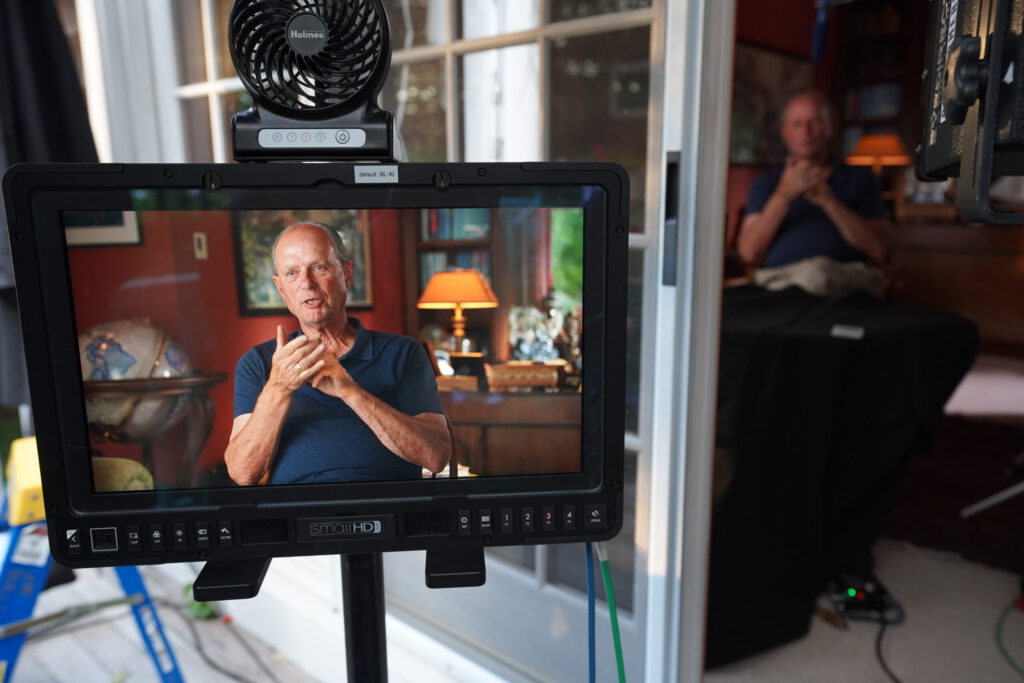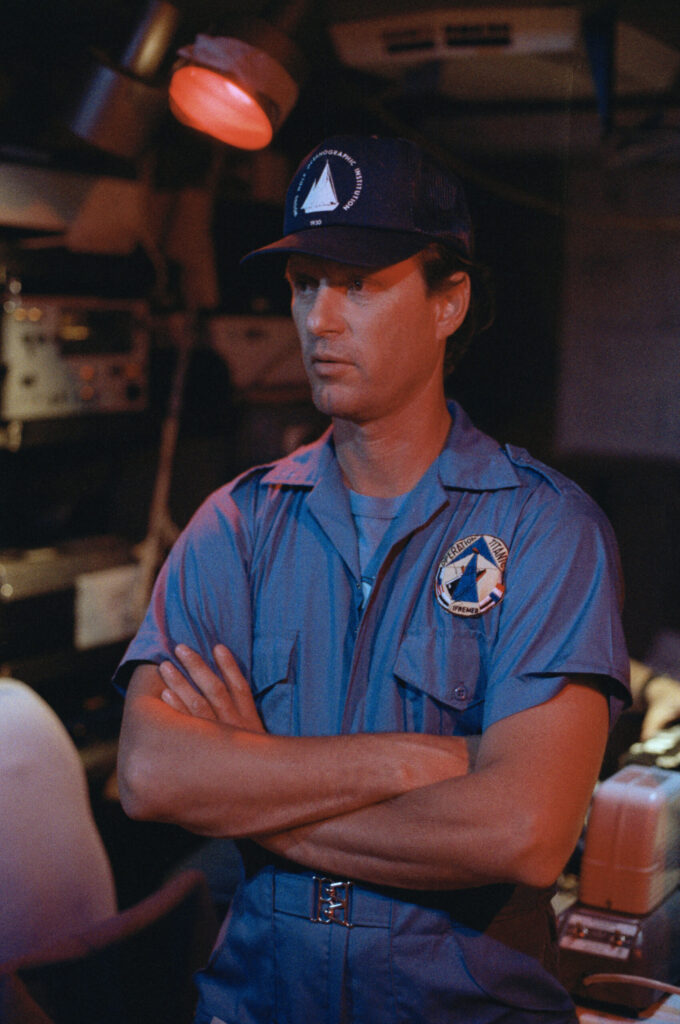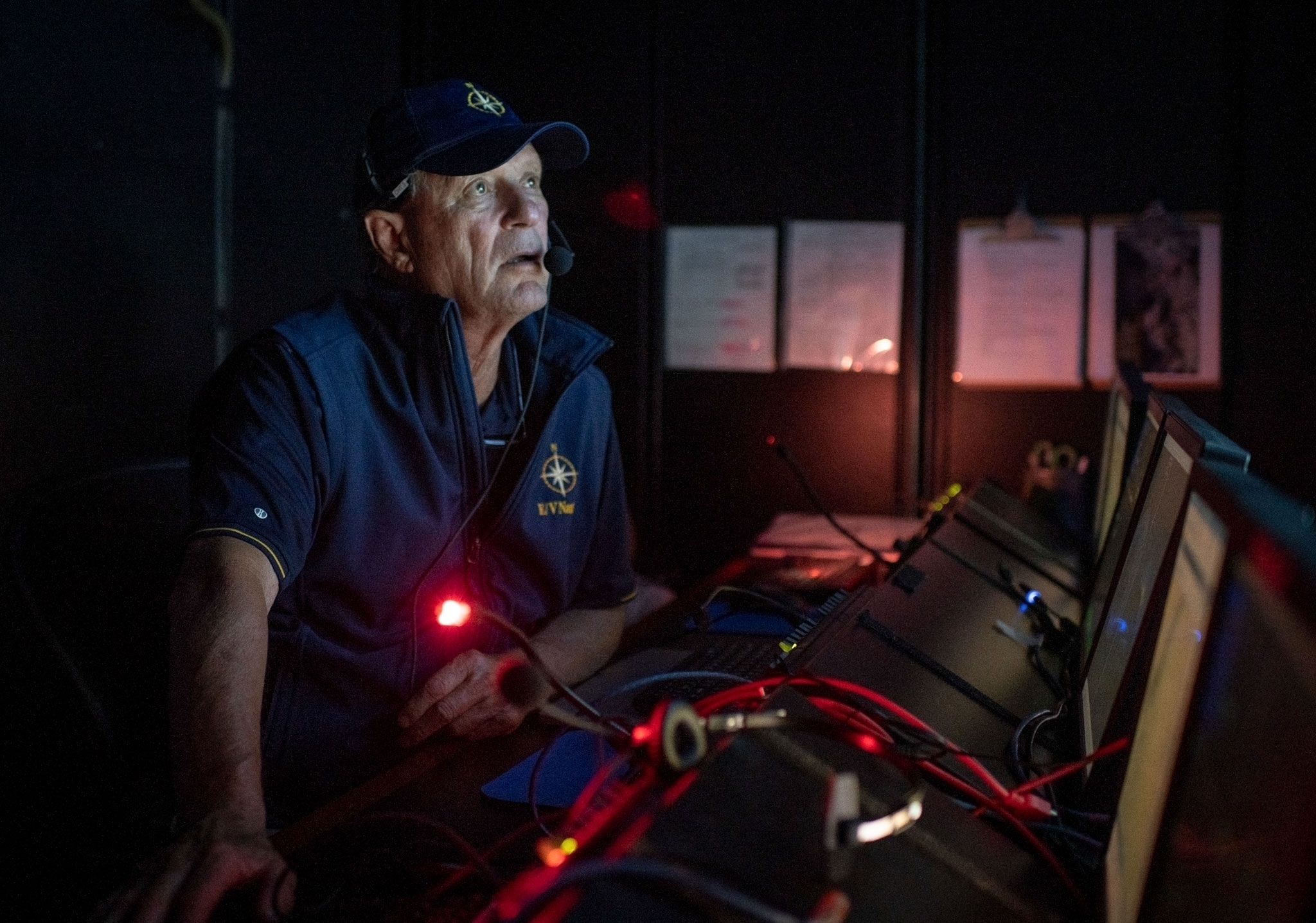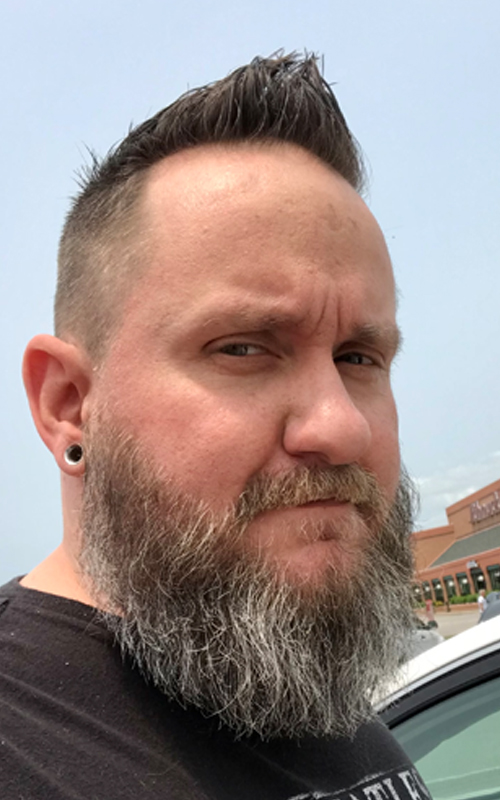The man who found Titanic. That phrase may be why you opened this story, but there is so much more to Dr. Bob Ballard than simply that single fact.
In Bob Ballard: An Explorer’s Life, he tells the tale of his life as a professor, a scientist, and, yes, an explorer. The show premieres Monday, June 14, on National Geographic. A 350-page companion book, Into the Deep, also hits shelves this week.
The Titanic discovery turned out to be a mixed bag for Ballard when he returned home in 1985. While TV appearances and interviews bombarded him immediately upon arrival, they also came at a cost. That cost is that Ballard will always be remembered as the man who found Titanic.

He’s also the man who proved plate tectonics in the 1970s and discovered hydrothermal vents as well as the man who led the first crew to the floor of the ocean. In addition, he and his crew discovered the Nazi battleship Bismarck, President John F. Kennedy’s PT-109, the USS Yorktown, USS Scorpion, USS Thresher, the site of the Battle of Guadalcanal, and countless others.
In a chat with Innovation & Tech Today, we talked about Titanic, as well as some of his other discoveries — and they’re big.
Innovation & Tech Today: Did the flood of attention that came with Titanic kind of pull attention away from some of your other projects and discoveries? Did it sour the experience for you at all?
Bob Ballard: No, no. It changed my life. And as you know, we have a companion book that’s 350 pages that goes into things deeper, called Into the Deep. Yeah, the Titanic is a mixed bag. Clearly got your attention. It does get people’s attention. In fact, when we were talking about the title for the book, they said they had to say, “The man who found the Titanic.” But in the epilogue and as you saw in the film, when they interviewed my mom, she says, “Too bad he found that rusty old boat.” Because I am a pretty serious scientist. I’ve done a lot of major discoveries in academia. I’m a professor and I did initially, I don’t get it so much anymore. I used to catch a lot of flack from my academic colleagues: “Why are you wasting your time writing articles for National Geographic, and talk shows and blah, blah, blah.”
I have a response. I remember I was walking down the hall and one of my colleagues says, “Oh! I now know what you do. I read all about it in National Geographic magazine. And my comeback was, “Oh, I now know the journals you read. You missed the same thing in Nature and Science,” which are the top journals in the world. I’ve always known I’ve had to publish four times more academically-refereed journal articles than my colleagues because of that. And I say, “What’s your citation index number?” And that is the killing question to an academician. In other words, how often are your academic papers referenced? And I have a very high citation index record. So I had to fight that, but it’s okay. They stopped doing that because now people are insisting scientists tell them what they’re doing.
I&T Today: It looks like you’ve managed to turn your career into your hobby at the same time.
BB:I was. I think it’s because I’m dyslexic, and I had to leave the box. Because the rules in the box, I mean school, those rules are stacked against us. So, I had to get out of the box, and it turns out that that’s what successful dyslexics do. Most self-made millionaires are dyslexic. But then there are certain fields, if you happen to go down the road in engineering, for example, at MIT, they call dyslexia the MIT disease because of the high, high percentage of dyslexic. Architecture, the arts. In my business, field geology, we’re visual creatures, so anything that takes advantage of our ability to see an image and imagine is where our strengths are. In fact, there’s a great book, The Dyslexic Advantage that explains how our brains work, and why we’re good at certain things and not good at other things. And I was lucky to have a dream, to be Captain Nemo, and to go in pursuit of that dream and succeed. So, yeah, but there’s so many that are, the majority of people in prison are dyslexics.

It’s a ying and a yang, you know? And so, I’m now reaching out to dyslexics, the 20%, that’s a big number, that are considered underrepresented like any other percentage, and saying, “You know, there is a path to success. Here’s the road to go down, and don’t go down that one.” It’s something I’m doing. This late in my life it’s time to pay back for the wonderful life I’ve been able to live.
I&T Today: That’s awesome. You’ve done so many things in your life. Is there anything that stood out as a moment that you felt like should have been a bigger deal than the attention it got?
BB: Thirteen-foot-long worms with humanlike blood that ingest poisonous gas, and replicate photosynthesis in the dark, and tell us there’s life throughout the universe, and even within our own solar system. I would say that trumps the Titanic big time.
I&T Today: That’s like running into H.P. Lovecraft out in the ocean somewhere. When I was listening to you tell that story, I kept flashing back to his old novels. Sea monsters and all this stuff that no one had ever seen before.
BB: Can you imagine a worm that’s 13 feet tall, has human-like blood, sticks out it’s lung and inhales poisonous gas? Out went the biology book on that one.
I&T Today: That’s one of the most terrifying things on Earth.
BB: Well, it was pretty, I wouldn’t say it was terrifying because I like fishing. Can you imagine the fish you can catch with a 13-foot worm? My gosh.
It was so funny when we brought up the first worm, there weren’t any biologists because no one expected it. And I called back to Woods Hole [Oceanographic Institution] to get some biologists.
They said, “Put it in formaldehyde.” I said, “We’re geologists. We don’t have any formaldehyde.” And they said, “Well, what do you got?” And I said, “We got bourbon, scotch.” They said “Great. Put it in whiskey!”
So when I went around and collected, because I was chief scientist. I went around and had to collect because it’s supposed to be a dry ship and everyone had it in their stash, and he says, “I’ll help you with this, but just don’t bring up another one.”

I&T Today: What was it like that first time you saw the ocean floor, when you came across all of these things?
BB: It was really, as you saw in the movie, and you’ll certainly read in the book, Into the Deep, it was seeing the movie 20,000 Leagues Under the Sea. I mean, I didn’t read the book because I’m dyslexic, so the last thing I’m going to do is pick up a book. Now I get them in audio, and now they have them in dyslexic font which helps a lot. But it was seeing the movie 20,000 Leagues Under the Sea, and when Kirk Douglas got aboard of the Nautilus and is sitting there. There’s no one on the Nautilus, and he goes down to Captain Nemo’s quarters. He hits the button, and that window opens like the iris of a lens. He saw Nemo and his team walking on the bottom of the ocean. They had the big lead foot, big helmets, and they were…
Can you imagine a kid that’s only looked at the ocean like this and you see someone walking. I got fixated. You know how kids can just get fixated on something? And I said, “The ocean has a bottom!” And not only does it have a bottom, it has the largest mountain ranges. It has tens of thousands of volcanoes. I mean, we have canyons in the ocean that make the Grand Canyon look like a ditch. I went down one continuous wall off the Cayman Islands — a 20,000 foot wall. Find one of those on land! A shear wall, 20,000 feet tall.
I&T Today: My gosh.
BB: That’s the bottom of the ocean. Like heck, it’s the bottom of the ocean. I just got fixated on wandering around down there. And with a dyslexic mind, I can see in the dark. I can image and take in all the sensor systems. So, I’m very comfortable. This command center actually, my ship, I’m about to go get on my ship in a couple more days. And I get on the Nautilus, which is in California right now in LA, and we sail July 3rd. We have to do a bunch of preparations. And you can watch it live. Go to nautiluslive.org and you can be in the command center. This will all be as if I was on the Nautilus.
But we’re scientists that are all over because we don’t know what we’re going to find. So we have what’s called doctors on call, like a hospital. You don’t know what the ambulance is going to deliver. So when we make a discovery, I’ll call you. And I’ll call you when you’re in bed and I’ll boot up your laptop and stream it on your laptop, patch you in to the pilot. We’ll have a conversation and you’re in bed. We say one-way video. But anyway. And then you decide whether to get out of bed and run to one of these things. So, that’s where we are now. It’s all robotics.

I&T Today: Wow! That is amazing. You’ve been doing this for a long time now. How has it been to watch and influence the major technological changes that have come along the way?
BB: The Geographic and Titanic. The fact that I’m the guy that found the Titanic, and that I’m associated with the best storytelling organization on the planet with National Geographic, whether it’s books, televisions, magazines, you name it — is they made me who I am because I enjoy communicating. I enjoy sharing. I’m a hopeless sharer of things. My mother would never look in my pockets when I came back from a walkabout because there was probably a lizard in there or some snake. I always would come home with things in my pocket, and she did not want to put her hands in my pocket. Because I’m just a sharer and I enjoy exciting people. I enjoy letting people know. It’s an epic journey that we talk about. You dream, you prepare yourself, you go forth on your journey. You overcome obstacles, you gain a truth and you come back and share the truth. It releases you to go on your next journey. And like I say, my spiritual guru is Joseph Campbell, who said, “Life is the act of becoming. You never arrive.” So, I’m constantly becoming, until I’m not.
I&T Today: Until you’re not. You’ve been, it looks like, from the video especially, a real champion for the STEM subjects and helping get youth interested again. What do you think is the issue there?
BB: It’s fun. I think the key is that kids have got to understand I’m living my dream. I honestly feel like I’ve never worked. I’ve always done what I love, but I had a passion. And the kids say, “Well, what should I do?” And I say, “Follow your passion.” It doesn’t matter what it is. It doesn’t matter what mountain you climb in life. It’s the act of climbing. But here’s the point. When you fall down, you won’t get up unless you want to get up. So don’t follow your parents’ “I want you to be a doctor. I want you to…” To heck with them, okay. You’ve got to follow your passion and you shouldn’t let anyone talk you out of it, because it’s the energy you need to keep you going. Because you’re going to fail. Failure is the greatest teacher you’ll ever meet, but you have to pick yourself up. And if you don’t want to get up, you won’t get up.
I&T Today: That’s right. That’s right. One other thing that stood out to me in the film, was watching you go down in the Ben Franklin. That was, as a guy who’s a little claustrophobic, I was like, this is wild. To think five days in that little capsule.
BB: Actually, the Ben Franklin itself was like, it was like 40 feet long. It was the biggest submarine I’ve ever been in, until I went in a nuclear submarine. It had bunks. The guy that built it, Piccard, was 6’5″ so the bunks were like seven feet long. They had a porthole. We had a shower so that spoiled me. Because that was my first dive and then the next one I’m in is boom, I’m in this little capsule. Now, I love the Ben Franklin. It was when I went down in a bathysphere at 20,000 feet and crashed. I think my combat training as an infantry officer, when the bullets are flying the last thing you do is run and scream. You have to contain it. And how do you contain fear, controlling fear and not panicking, because in my business, if you can’t control panic, you’re dead. Same with diving. When you’re diving in scuba and going to great depths and there’s a problem, you’ve got to lock on and stay calm.
I’ve always been in a situation when it hits the fan and things really go bad, you never know how other people are going to react. The person you thought was going to be cool, panics. And this person over here that you thought might panid, is solid as a rock. I love those moments quite honestly, as long as no one dies. Knock on wood. Good to go so far. I love moments when we test a person’s mettle. And I’m always surprised at who stands strong. Commonly, are the ones you thought wouldn’t, that do, and it’s really nice. And when things go bad, I sort of see the world slow down. It’s like everyone’s moving. And I get very calm and I’m looking around a lot, and I actually crave those moments. They’re pretty amazing.
I&T Today: Well, that’s where you learn a lot about yourself, as much as anything too.
BB: Absolutely. And you know, it does help to have done a lot. Plus, and for some reason, I have an iron stomach when it comes to going on a ship. As long as you don’t release diesel fumes around the air zone. But I always sort of looked at rocking and rolling on a ship is as like a ferris wheel or something. And yeah, I feel sorry for people that have chronic seasickness. But now you don’t even have to go to sea anymore, you can use robots now and you’ll never get seasick.
I&T Today: Oh, I bet it has. So what’s the future looking like? Still going strong?
BB: Oh yeah. One of the reasons for wrapping this whole thing up was so the next one can get moving. We have just been commissioned, this is pretty cool, by our government to mount the second Lewis and Clark expedition. Most people don’t know that 50% of America, half our nation is underwater, and we have better maps of Mars than half the United States. And so we’re literally doing what Lewis and Clark did when Jefferson doubled the size of the United States. When Reagan signed the law of the sea, he doubled the size of America, and yet we need to find out what we own. So, I put together a tremendous dream team of explorers and we won this big competition for $100 million dollars over five years, and then renewed for another $100 million to map and characterize America’s underwater land. We sail July 3rd.
We’re not calling it the Lewis and Clark Expedition, because 50% of my team are women in leadership positions. In fact, most of the top leadership of my organization are women, so we’re calling it the Lois and Clark expedition.










